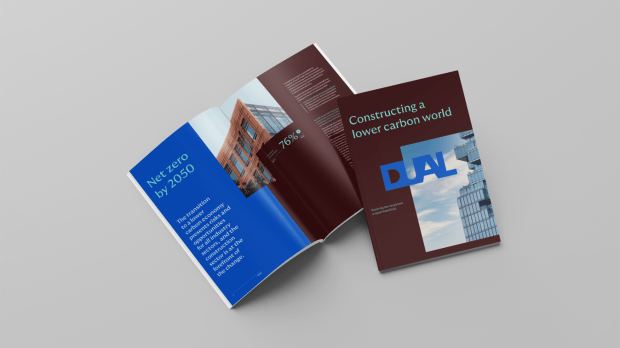DUAL Underwriting Perspectives: An underwriter’s perspective on right of light
 By Chris Gwynn - Lead Underwriter, Social & Public Law, DUAL Climate Risk & Resilience
By Chris Gwynn - Lead Underwriter, Social & Public Law, DUAL Climate Risk & Resilience
The recent Bankside judgment has stirred considerable discussion across the development, legal, and insurance communities. As an underwriter, I’ve watched with interest how this decision has impacted the landscape of right of light (ROL) risk assessment and mitigation. I recently joined a panel discussion hosted by DUAL UK, alongside Jerome Webb and Nicholas Levy. It was a valuable opportunity to unpack the implications of the case. Below are my key takeaways.
Watch the full video
From Bankside to Boardroom: Right of Light Refresher
Waldram methodology: stability amid complexity
The Waldram methodology has been the principal methodology used by light surveyors for the past 100 years. In the Bankside case, the developer and their advisers sought to argue that the Waldram method should be retired. A number of reasons were presented for this, but the argument centred on the Waldram method being too simple and discounting a number of factors which we can now measure with the aid of computers. The court ultimately disagreed, preferring to defer to current industry practice and avoid the subjectivity that may come from other methods for assessing light.
From an insurance standpoint, the reaffirmation of the Waldram method as the primary tool for assessing ROL interference is a welcome development. Its predictability and objectivity provide a stable foundation for underwriting decisions. While alternative methodologies like Median Daylight Factor or Median Daylight Illuminance offer a more rigorous assessment methodology, they introduce subjectivity and complexity and do not come with a readily available approach for calculating potential compensation. For insurers, consistency is key and Waldram delivers that, even if it may evolve in an industry led manner in time.
Appropriation powers
Public bodies in England and Wales have statutory powers (under s.203 Housing and Planning Act 2016) to appropriate land for development. Once carried out, the effect of an appropriation is to override private rights that are enjoyed over the land. The London Borough of Southwark had appropriated most of the development site, but not the Arbor Tower as it was already under construction, which became the focus of the claim. The court ultimately found that the fact that the remainder of the site had been appropriated was a compelling reason not to award an injunction to the claimants. However, the court also found that light over any appropriated land should be discounted from any assessment, which had the effect of compounding the loss of light.
Appropriation remains a statutory tool of last resort, but its strategic use is gaining traction. Developers increasingly view it as a fallback when negotiations stall, but the Bankside case demonstrates the potential difficulties in this approach. While an appropriation can remove injunction risk, it introduces new layers of complexity, especially around negotiation strategy, statutory compensation calculation and public benefit justification. From an underwriting perspective, it’s not a silver bullet, but it can influence premium and excess calculations when used effectively and built into the insurance policy at an early stage of the development.
Developer conduct: transparency matters
One of the most striking aspects of the Bankside judgment was the Court’s emphasis on developer conduct. The refusal to grant an injunction, despite proven interference, was a positive precedent for developers, but it came with caveats. Courts value transparency and reasonable behaviour. Developers who engage early with neighbours, even outside the context of ROL discussions, are more likely to be viewed favourably. For insurers, this reinforces the importance of assessing not just technical risk, but behavioural risk too and the use of strategies like Agreed Conduct within policies to allow developers to mitigate the risk of an injunction.
Damages assessment: moving beyond multipliers
Traditionally, negotiating damages has generally defaulted to a 30–33% profit share model. In Bankside, the Court reflected on the correct approach to calculating negotiating damages and considered multiple factors to arrive at a more nuanced “feels right” figure, including severity of injury, property value, developer conduct, and overall fairness. This clarity is helpful for insurers. A trend that has developed in ROL claims is the use of third-share of profit arguments to rachet up settlements. The approach in Bankside will provide additional arguments for developers and claims managers to push back on ransom claims. This is expected to have a positive impact on claim outcomes in the short term and premium and excesses in the medium term.
Strategic implications for developers and insurers
The judgment underscores the need for early engagement and comprehensive risk assessment and strategy. Even low-risk properties can escalate into significant issues, particularly in masterplan schemes. For insurers, this highlights both the value of ROL assessments carried out by surveyors and legal advisers with expertise and experience and profiling neighbouring owners and the demographics of an area. Wealthy owner-occupiers with deep pockets remain a red flag, but speculative windfall-seeking is likely to be deterred by the outcome of Bankside.
The insurance market: competitive and evolving
The ROL insurance market is becoming more competitive, and Bankside has provided clearer judicial guidance which is likely to provide comfort to insurers. A note of caution however: how legal precedent is used by claimants can be hard to predict. The large damages in lieu payments awarded to the claimants in Bankside could spur claimant activity and insurers will be monitoring this closely.
Final thoughts
Bankside didn’t rewrite the rulebook, but it did provide some helpful clarification. For developers, it highlights the importance of obtaining expert advice to assess and manage right of light risk and of open and neighbourly conduct. For insurers, it’s a reminder that underwriting is as much about people and process as it is about numbers and models. As this area of law continues to evolve, collaboration between developers, surveyors, lawyers, and insurers will be key to navigating the complex terrain of right of light.


